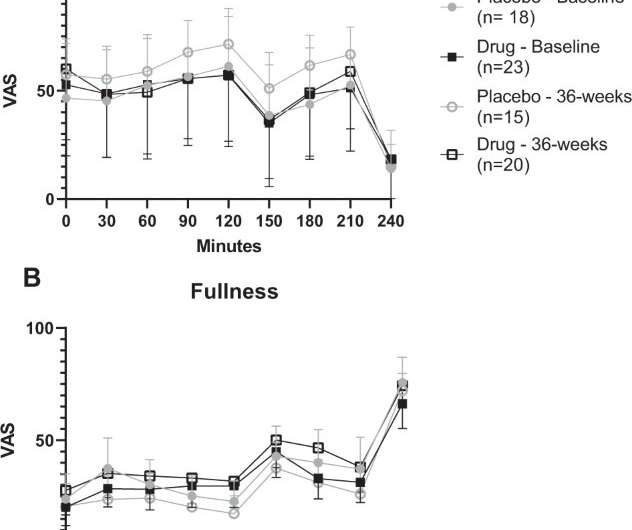New insights into hypothalamic obesity

Hypothalamic obesity (HO), a refractory form of obesity, results when suprasellar tumors lead energy intake to overtake energy expenditure.
GLP-1 receptor agonist (GLP1RA) therapy—a common Type 2 diabetes treatment—is associated with lowering eating compulsion and raising energy expenditure, and a previous study suggests that it may improve or stabilize HO.
In a randomized, multicenter, double-blind and placebo-controlled clinical trial, Ashley Shoemaker, MD, MSCI, and colleagues tested the effect of once-weekly, extended release GLP1RA (exenatide) treatment on body composition, caloric intake, physical activity and total energy expenditure (TEE) in adolescents and young adults with HO.
Typically, TEE falls in response to weight loss. Patients receiving exenatide did not lose weight, however, even though their TEE decreased, they ate less, and their body composition improved.
This unexpected result may be due to the refractory nature of the disorder, the researchers reported last month in the International Journal of Obesity. Additional pharmacologic agents may be needed to improve weight loss in patients with HO.
More information: Ashley H. Shoemaker et al, Energy balance in hypothalamic obesity in response to treatment with a once-weekly GLP-1 receptor agonist, International Journal of Obesity (2022). DOI: 10.1038/s41366-021-01043-6





















